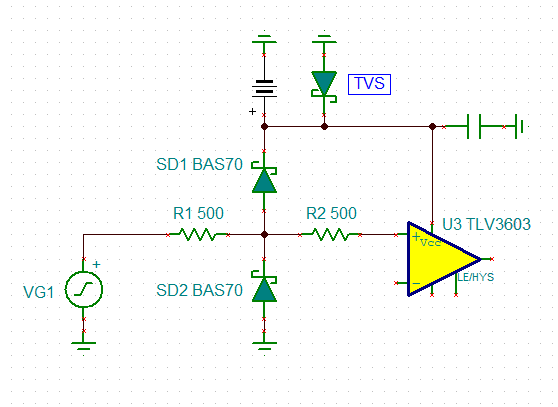Hello,
My customer has been investigating TLV3603. They saw the notes shown under the table of the absolute maximum ratings, so they'll have a schottky diode to meet the note, but they aren't sure which diode they should add without the characteristics of the internal diodes. Would you please tell me the characteristics or recommend the external schottky diodes to meet the note (2) shown below? Note that they downloaded the SPICE model, but it doesn't seem to support the diode.
(2) Input terminals are diode-clamped to the power-supply rails. Input signals that can swing more than 0.3 V beyond the supply rails must be current-limited to 10 mA or less.
Best Regards,
Yoshikazu Kawasaki


